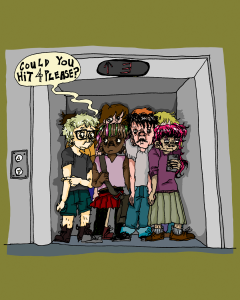Pro’s and Cons of Minimum Wage
January 30, 2020
When it comes to minimum wage, the intentions are noble to help the underdog succeed. Yet, with good intentions, there are often negative outcomes.
Minimum wage creates a price floor, preventing employers and workers from negotiating wages. Low-skill workers without experience are impacted negatively by minimum wage laws, the National Bureau of Economic Research reported. However, low-skill workers with experience are not heavily impacted because employers won’t need to invest in their training.
Furthermore, minimum wage laws may raise the overall cost of goods and services. This causes inflation because workers will increase their purchases and businesses will eventually raise costs to maintain inventory. Therefore, any purchasing power is eliminated when prices adjust for the influx of money.
However, inflationary consequences occur when minimum wage increases drastically: say, from $7.25 to $15. Should a less drastic wage approach be taken, say, from $7.25 to $9, then negative inflationary consequences will be averted.
It’s been 10 years since the federal government raised minimum wage from $5.15 to $7.25, the Economic Policy Institute said. Clearly the minimum wage must increase to keep pace with inflation and to prevent inflation from cutting into employee paychecks. Yet, this is not the case since wage gains have kept pace with inflation, according to The Wall Street Journal. Therefore, increasing the Federal minimum wage to $15 will have unnecessary winners and losers.
The Congressional Budget Office found that should minimum wage increase to $15, 1.3 million workers would become jobless, while 1.3 million workers would escape poverty. The winners in this scenario are those that keep their jobs because their bank account is higher. But, firms will lay off a worker for every employee lifted out of poverty. Thus, would anything really change?
Maybe our society is looking at inequality and poverty the wrong way. Our country is built on self-sufficiency. Therefore, any possible solution will require policies that make workers self-sufficient.













